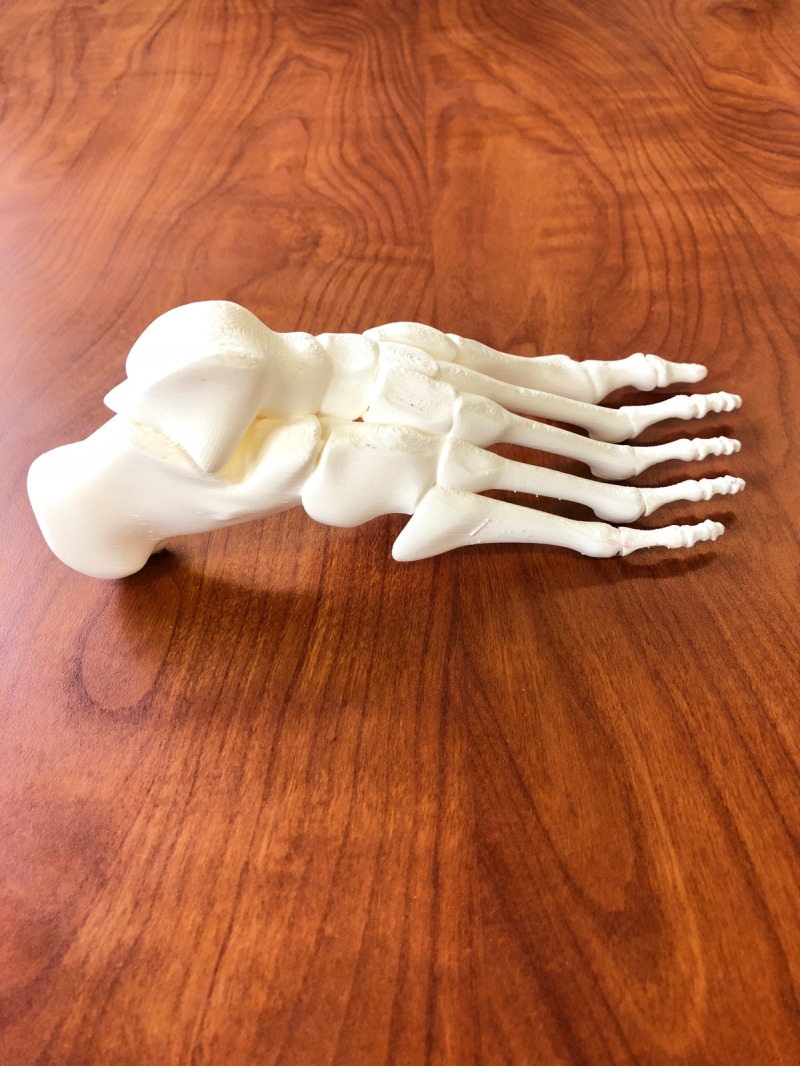Passionate researchers use 3D printing technology to advance health care

A group of researchers is using cutting-edge technology to provide critical training to health professionals at home and abroad.
The MUN MED 3D team designs and engineers advanced anatomical models and educational tools for simulation training and clinical application. Their research is aimed at improving patient outcomes and saving money for health-care systems.
“For rural and urban training sites the cost of simulators is a significant barrier to training,” said Dr. Adam Dubrowski, professor, emergency medicine, Faculty of Medicine and principal investigator of the project.
The research team also includes Greg Walsh, project manager and engineer; Christine Goudie, research assistant and designer; and Nicole Bishop, research assistant.
“Simulation is the new standard in education and medical practice, and we are a unit that is able to help ensure our learners and patients benefit from that standard.”
In addition to educational benefits, he says pre-planning surgeries with 3D-printed models significantly reduces time in the operating rooms which, in turn, reduces re-admission rates and hospital stay.
Big boost
Earlier this year, Dr. Dubrowski, along with co-investigators Michael Bartellas, Dr. Steve Ryan, Travis Pickett and Dr. Gary Paterno, professor of oncology, Faculty of Medicine, received more than $1.4 million from the Atlantic Canada Opportunities Agency.
The funding is being used to advance simulation-based health profession education and patient care across Newfoundland and Labrador by expanding the existing MUN Med 3D lab at the Faculty of Medicine, where the team is based.
The group has established a network of research and development siteswithin rural communities across the province, which are now using 3D printing technology.
Researchers in the main lab are providing ongoing project support, as well as engineering and biomedical expertise.
“The reaction from the sites has been fantastic,” Dr. Dubrowski told the Gazette.
He says about 30 per cent of the team’s projects come from those areas.
Making a difference
The impact of the group’s work is diverse and far reaching.
They’ve helped train general surgeons based in rural parts of the province perform emergency craniotomies; designed specialized assistive devices, such as adaptable cup holders for wheelchairs; and teamed up with the Dr. H. Bliss Murphy Cancer Centre in St. John’s to use CT imaging to design and print bolus molds, which provide a better fit for patients undergoing radiation therapy.
“The thought of possibly affecting change on a global scale is what sets my soul ablaze.”
They’ve also worked one-on-one with medical professionals in Bangladesh, assisting with rehearsing suturing high-risk lacerations that occur during childbirth.
In September, team member Christine Goudie took part in a medical trip to Bangladesh with Team Broken Earth, a group founded by Dr. Andrew Furey, a Memorial alumnus and an orthopaedic surgeon.
“We brought 25 simulation models designed in collaboration with several OB/GYN surgeons to Bangladesh for local clinicians to rehearse suturing high-risk lacerations that occur during childbirth, which are directly linked to a significantly high maternal mortality rate for women in the region,” said Ms. Goudie.
She says the trip was eye-opening, giving her a better sense of how a health-care ecosystem operates in a developing country.
“If we can help to improve the quality or save the life of one woman through simulation-based medical training, by mitigating the unnecessary risk that is associated with rural childbirths in Bangladesh, that would be an incredible win for everyone,” said Ms. Goudie, who received her biomedical education and training outside the province and is now applying her in-depth experience to the team.
“The thought of possibly affecting change on a global scale is what sets my soul ablaze — it’s the reason I chose biomedical engineering as my career.”
Armed with that tenacity, Dr. Dubrowski says he and his team are hopeful they’ll secure further funding from government, industry or a private donor, allowing them to continue their work and expand their operations.
“We have only seen the tip of the iceberg of this initiative’s potential.”
Learn more about MUN MED 3D team and the innovative work of the MED 3D Network here.
Jeff Green is a senior communications advisor with the Office of the Vice-President (Research). He can be reached at jeffg@mun.ca.